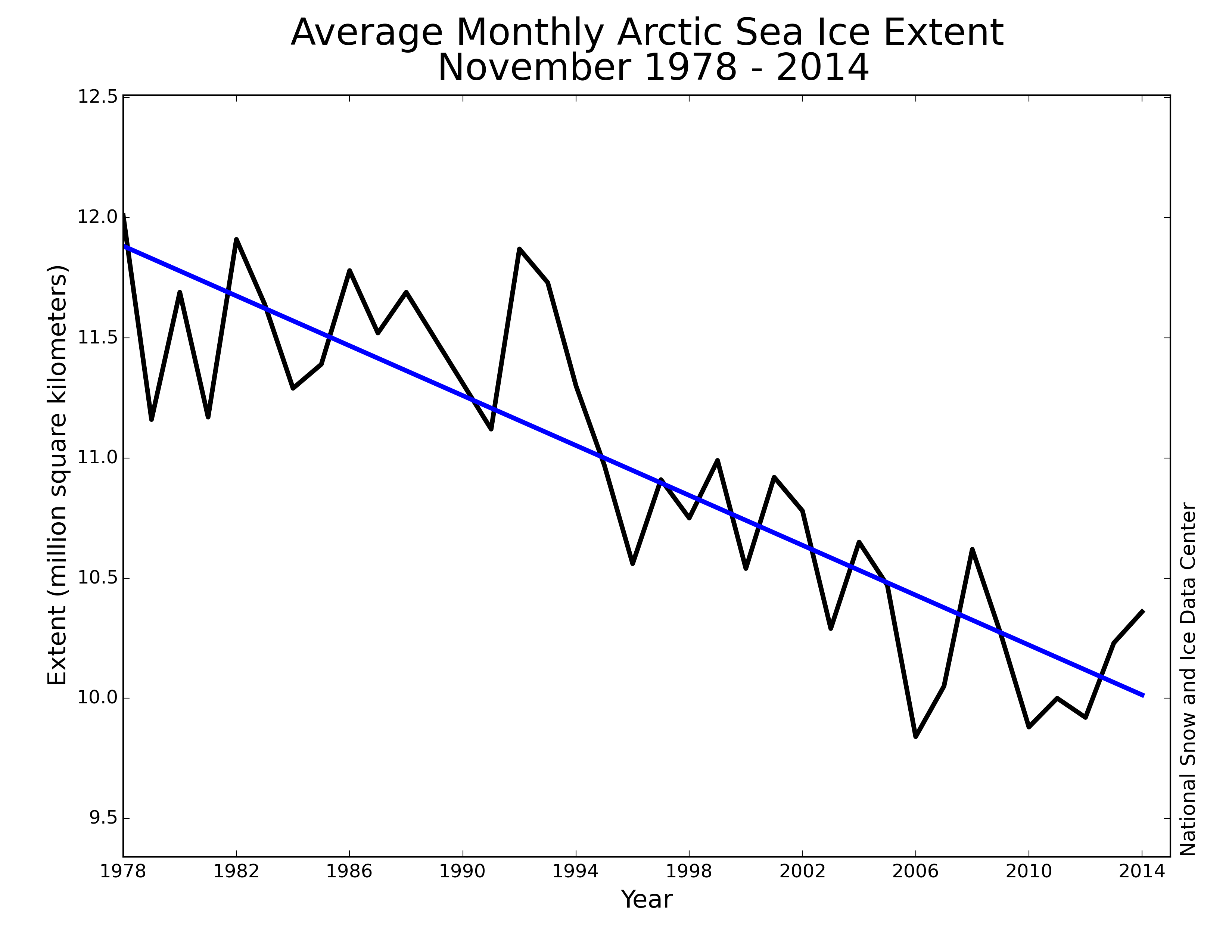This is important because if we want to help the poor people who are most threatened by natural disasters, we have to recognize that it is less about cutting carbon emissions than it is about pulling them out of poverty.
The Intergovernmental Panel on Climate Change finds that "The poorest segments of societies are most vulnerable to climate change." Thus reducing the magnitude of climate change is integral to caring for the world's poor.
 This timeseries figure from the National Snow and Ice Data Center (
This timeseries figure from the National Snow and Ice Data Center (